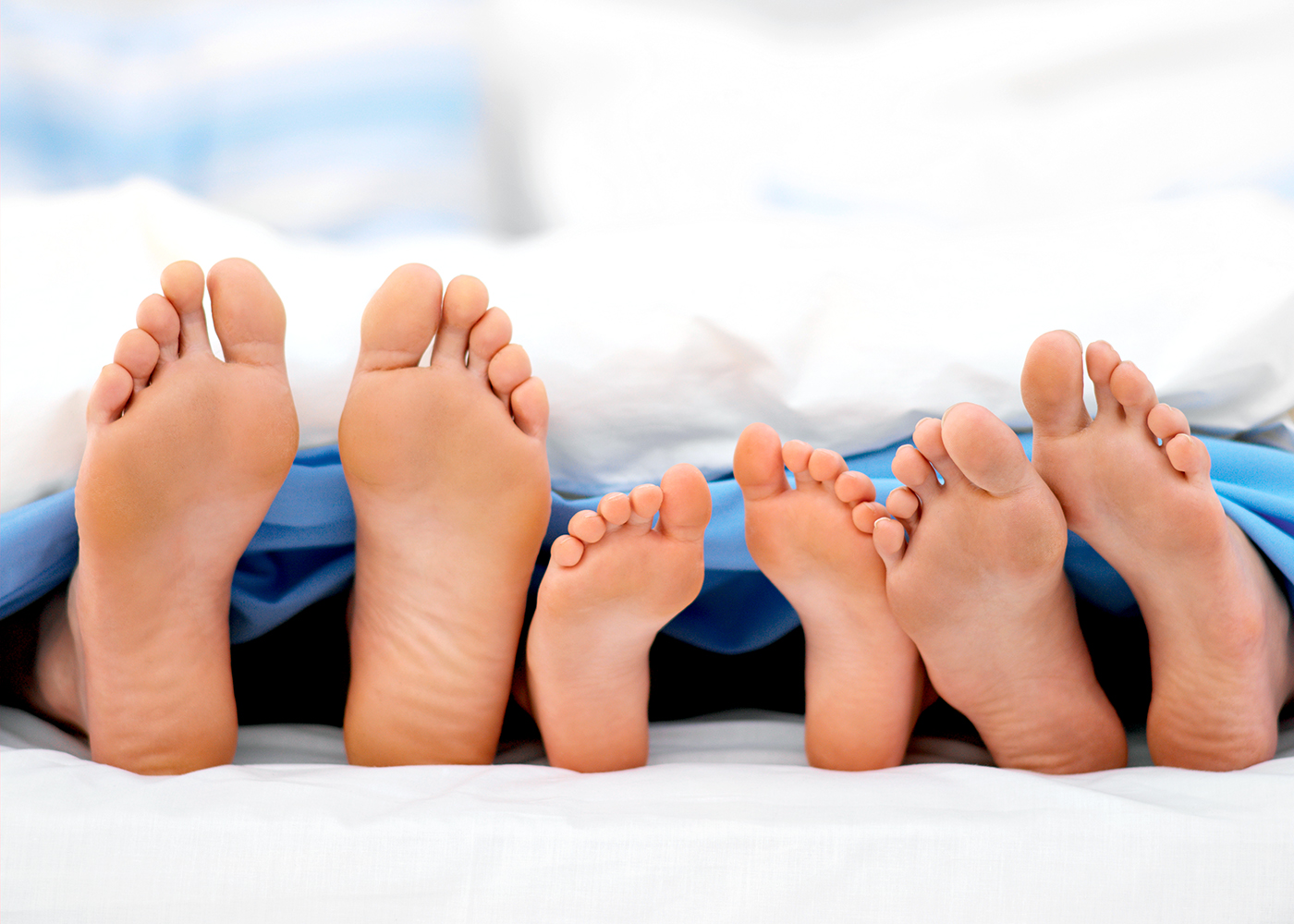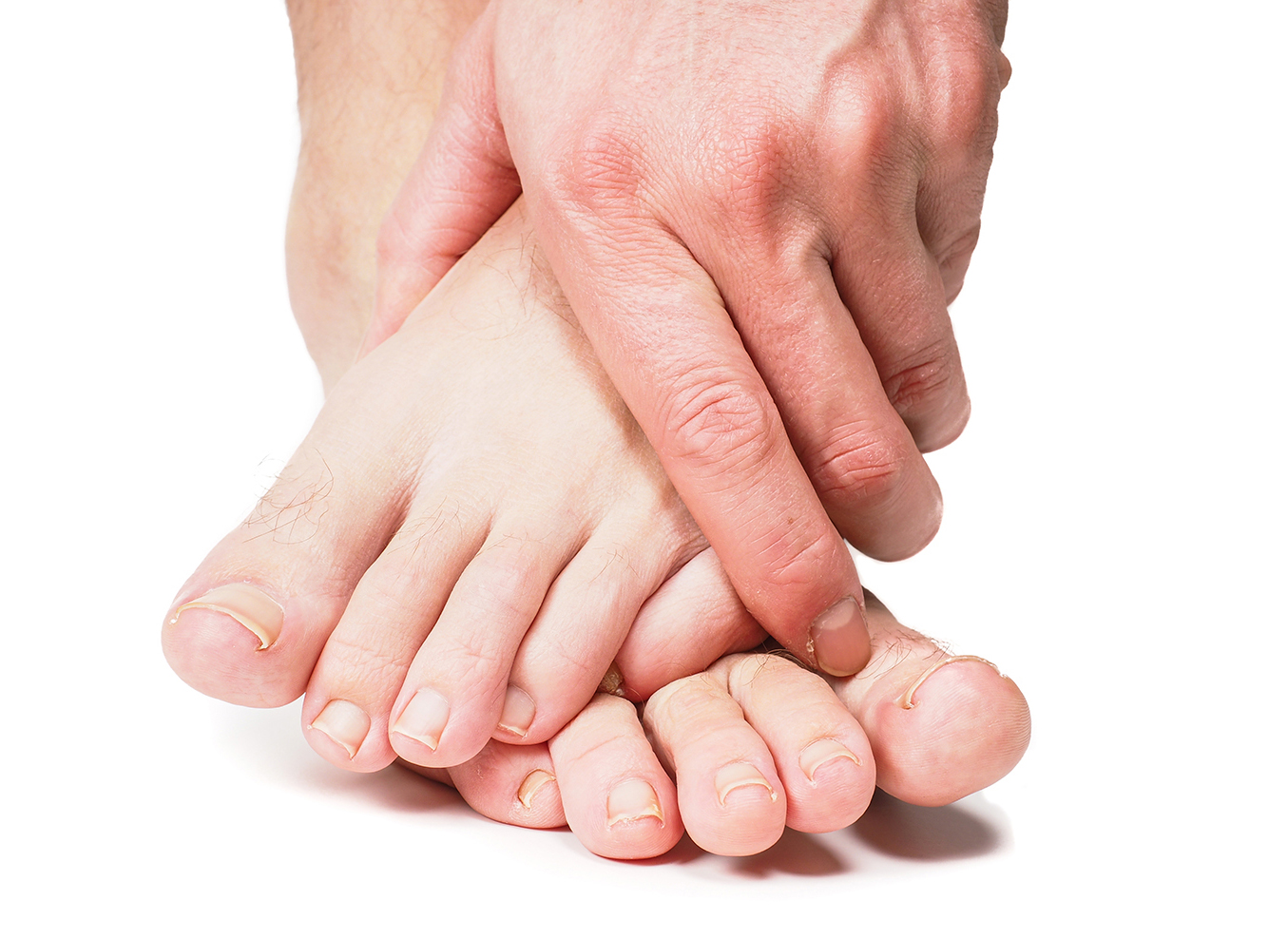A little tender loving care will help keep you on your feet
By Wendy Haaf
If your feet hurt, it’s difficult, if not impossible, to stay active, which is key to maintaining good overall health. And even if you’ve been free of foot problems in the past, some of the physical changes that occur as we age can make foot problems more likely after age 55.
For instance, circulation in the lower limbs tends to become more sluggish, which, among other things, can lead to thickening of the nails. The cushioning fat pad on the sole thins out, which can alter the alignment of bones in the foot, changing the way the joints move. The ligaments that help bind the bones together can become more slack, so the forefoot may spread out and grow wider. At the same time, the shock-absorbing sheet of connective tissue that spans the bottom of the foot from the heel to the base of the toes can become less elastic and more prone to becoming irritated by stress and strain.
Footwear Care

Photo: iStock/KatarzynaBialasiewicz.
Many foot problems are at least exacerbated, if not caused, by wearing inappropriate or ill-fitting shoes, and as we get older, it becomes even more important to invest a bit of time and effort in choosing the right footwear for when we’re most active, such as when shopping, walking, travelling, and running errands.
“If you’re just going out for lunch, you can wear whatever you want,” notes James Hill, president of the Ontario Podiatric Medical Association, “but for those daily miles, you’ve got to have proper support.” A good shoe can help absorb the shock of stepping onto pavement and hardwood and support bones and ligaments in an optimal position, so they’re less likely to hurt or to tire as easily.
So what should you keep in mind when shopping for a shoe? First, start your search at the right time. Because feet tend to swell over the course of the day, a shoe that fits first thing in the morning can be too small by dinnertime; go shopping in the mid-afternoon or later. It’s also worth having your feet measured accurately at least every year or two at a store that employs experienced staff.
“We see a lot of people wearing shoes one, two, or even three sizes too small,” says Nadine Webster, president and chief chiropodist at Kawartha Total Foot Care Centre in Bobcaygeon, ON. (This can be true of people with nerve damage caused by diabetes: sometimes, because they’re able to feel some types of pain but not others, they may not realize that they’re not sensing pressure or pain from a too-tight shoe.)
When it comes to shoe type, lace-up running or walking shoes are among the best options for casual wear. Most walking and running shoes provide good support and cushioning, and laces allow for adjusting the fit to your foot. If you participate in sports, match your shoe to the activity in question: for instance, running shoes are fine for walking, but walking shoes are not made for running.
“The shoe should flex at the ball of the foot,” says Joseph Stern, a podiatrist in Vancouver.
It should also have some structure, says Howard Green, a podiatrist in South Surrey, BC, and immediate past-president of the Canadian Podiatric Medical Association. “Shoes you can take and twist like a dishtowel aren’t good,” he says.
That rules out most flip-flops—save those for the pool deck and public showers, where they can help prevent you from picking up a fungal infection. And backless shoes that require you to clench your toes to keep them on can fatigue muscles, as well as contribute to imbalances in the muscles responsible for keeping the toes straight.
If the Shoe Fits…
When trying on a shoe, make sure there’s at least a thumb’s width of space between your longest toe and the end of the shoe, Stern advises. The toe box, or front of the shoe, should be sufficiently wide and deep to accommodate your forefoot with a sliver of space to spare. And forget that so-called break-in period: a shoe should be comfortable from the moment you put it on.
“It shouldn’t rub or pinch anywhere,” Green stresses.
If a shoe fits well otherwise but is a tad too tight to adequately accommodate the bump of a hammertoe or bunion, a chiropodist or podiatrist may be able to stretch it mechanically so it won’t cause trauma to your foot, Webster says.
Another thing to keep in mind is that shoes that look worn out may no longer be providing sufficient cushioning and support. “Some patients who end up seeing me just needed new shoes,” Stern says.
How long can you expect a shoe to last? “Rubber-soled walking or running shoes last three- to five-hundred running miles, or four- to six-hundred walking miles,” Stern says. That means, he adds, that you should replace your everyday shoes every six months to one year, depending on your activity level.
What you wear on your feet—or don’t—at home can also contribute to foot fatigue and pain. According to Hill, one reason foot pain is common in retirees and people who’ve had recent surgery is that these people often either go barefoot or wear slippers that provide little support for much of the day.
“A lot of people underestimate how much time they’re on their feet at home,” notes John-Paul Gordon, a podiatrist with Body Quest Health & Wellness Centre in St. John’s, NL.
“One of the biggest tips I have for retirees is to wear your shoes, even in the house, as a functional measure to keep you comfortable,” Hill advises.
Even just putting shoes on when you’ll be standing for a prolonged period—for instance, while making a meal—can help, Gordon says. (On the other hand, if you can go barefoot all day without any discomfort, you don’t necessarily need to wear shoes in the house, just as you don’t need to wear glasses if you can function well without them, says Bradley Sonnema, an Edmonton podiatrist and president of the Canadian Podiatric Medical Association.)
For those who prefer sandals, Hill suggests trying a comfy wedge style for at-home wear. “There are a lot of nice sandals available now that have cushioning or arch supports built in,” Webster notes. Some even come with removable insoles so you can swap them out with the custom prescription type—called “orthotics”—if necessary.




